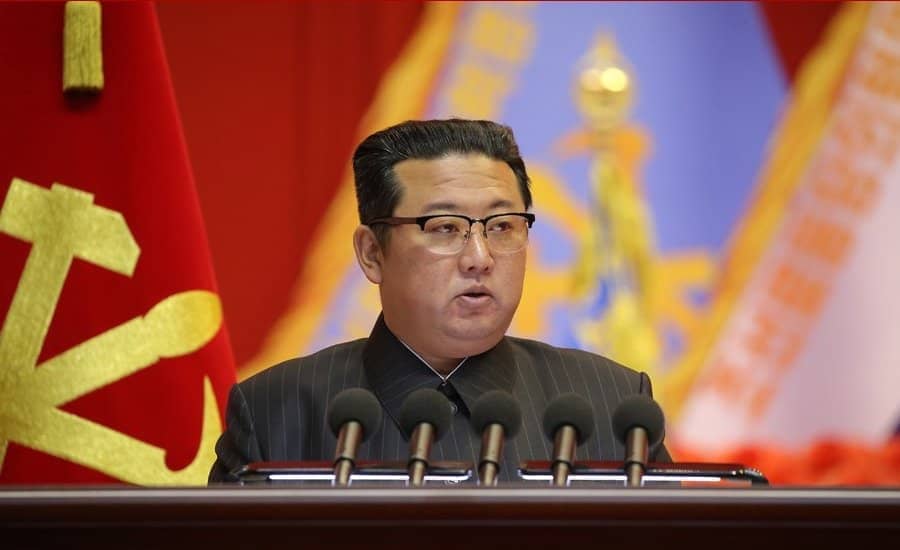Ten years ago today, at noon on 19 December 2011, the veteran newsreader and ‘Pink Lady’ Ri Chun-hee, donned an unusual black hanbok. Struggling to hold back her tears, Ri announced that North Korea’s Dear Leader, Kim Jong-il – a recluse workaholic who had led the country for 17 years – had died.
On the same day, his twenty-something second son, Kim Jong-un, was duly anointed as the ‘great successor to the revolutionary cause’. Today’s anniversary does not reflect well on Kim’s legacy as leader of North Korea. He now rules a state crippled by economic problems, beset by factionalism in the ruling party, and which has sour relations with both the US and South Korea. After ten years in power, how did it all go so wrong for Jong-un?
Only a few years before his ascension, the youthful Jong-un had been a political nobody and it surprised most North Korean observers when he rose to the rank of a four-star general in 2010. He benefited from his older half-brother, Kim Jong-nam, falling out of favour with the wider family, allowing Jong-un – with his penchant for capitalist luxuries such as basketball and alcohol – to rise to the top.
The Supreme Leader will be watching his own health. If he wants to lead his country in his own way, he must be fit to do so
Those who thought Kim would be an economic and political reformer – in the style of China’s Deng Xiaoping – were quickly proven wrong. Kim not only wanted to make North Korea great; he wanted to make it in his image.
Like his grandfather, he purged undesirables to consolidate power, ordering the execution of his uncle, Jang Song-thaek, in December 2013 after Jang allegedly suggested that North Korea move away from hereditary rule. Within the ruling Workers’ Party of Korea, Kim promoted his sister, Kim Yo-jong, to high-flung positions within the Publicity and Information Department, responsible for propaganda dissemination, and the policy-making body of the State Affairs Commission. She has now become her elder brother’s mouthpiece, spouting vitriolic denunciations of the US and South Korea.
Kim Jong-un also strengthened North Korea’s status as a nuclear power. Four nuclear tests took place between 2013 and 2017 – two of which were allegedly Hydrogen bombs – which have been coupled with a smorgasbord of missile launches, including intercontinental ballistic missiles capable of striking the US. Although he proudly declared that the North was a ‘full-fledged nuclear state’ in 2018, Pyongyang’s nuclear and missile aspirations have not stopped there. September this year saw the stupefying launches of a ‘hypersonic’ missile, and a rocket launched from a moving train.
Kim is no compromiser. In his notorious – if unsuccessful – theatrical diplomacy with Donald Trump, Kim was unwilling to concede anything on his nuclear programme and received nothing in return. Closer to home, after keeping his distance for seven years, Xi Jinping finally met Kim in 2018. Although Pyongyang and Beijing have since become closer, China knows that North Korea is ultimately an untrustworthy neighbour, but one it is willing to keep afloat.
The regime’s growing openness about its recent economic crisis point to Kim’s own domestic failures. Earlier this year, Kim admitted that his five-year economic plan had been a catastrophic failure. The party’s ‘new strategic line’ in 2018, targeting domestic economic development, is a distant memory.
Infrastructure development has been hampered by meteorological disasters and multilateral and bilateral sanctions: the US imposed new sanctions on the country only last week. The regime has even been forced to beg for cash from its moneyed elites, the donju. Yet even without sanctions, the North’s economy would hardly be efficient.
Then came coronavirus. The country’s calamitous decision to shut its borders in January 2020 both halted trade flows and became an excuse for Kim to prevent outside information reaching his people. Following a much-speculated absence, a slimmer Kim re-emerged this summer, warning his people that economic hardship would be a staple for some time.
In the ten years of Kim’s rule, three separate presidents have graced the White House in Washington and Blue House in Seoul. Biden’s policy towards the DPRK remains ambiguous. Whoever inherits the South Korean presidency next year will aim to improve upon Moon Jae-in’s ill-fated but repeated pledges to bolster cooperation with the North, and end the Korean War. Yet dealing with the US and South Korea, whilst important for Pyongyang, are not the North’s immediate concerns. Missile testing is likely to continue, albeit more sporadically than during the Trumpian days of ‘fire and fury’. Pyongyang wants to keep the US on its toes and ready to offer concessions, especially if the North is not high on Biden’s agenda.
As he plans his next decade, Kim’s short-term goal remains to ameliorate the ever-bleaker impact of Covid. The party will doubtlessly also continue emphasising the vapidities of its juche state ideology to keep its countrymen in line.
The resumption of the North’s interactions with the outside world, however, remains in the hands of Pyongyang. Although foreign diplomats, including those from the United Kingdom, have departed from their embassies in Pyongyang temporarily, their date of return remains unknown. Efforts by the United Kingdom and European states to talk to the North may not bear much fruit immediately, but should not be abandoned.
The Supreme Leader will be watching his own health. If he wants to lead his country in his own way, he must be fit to do so.
Madame Ri retired as a news broadcaster in 2012, but Kim III has brought her back to announce missile and nuclear tests; to laud his escapades with Trump; and to introduce his wife, Ri Sol-ju, as the new First Lady. Each time a celebration arises, nuclear or otherwise, the Pink Lady re-emerges. The question now though is if there will be many opportunities for North Korea to celebrate. The country is heading toward a bleak mid-winter. Whether Kim can survive another decade remains to be seen.






Comments